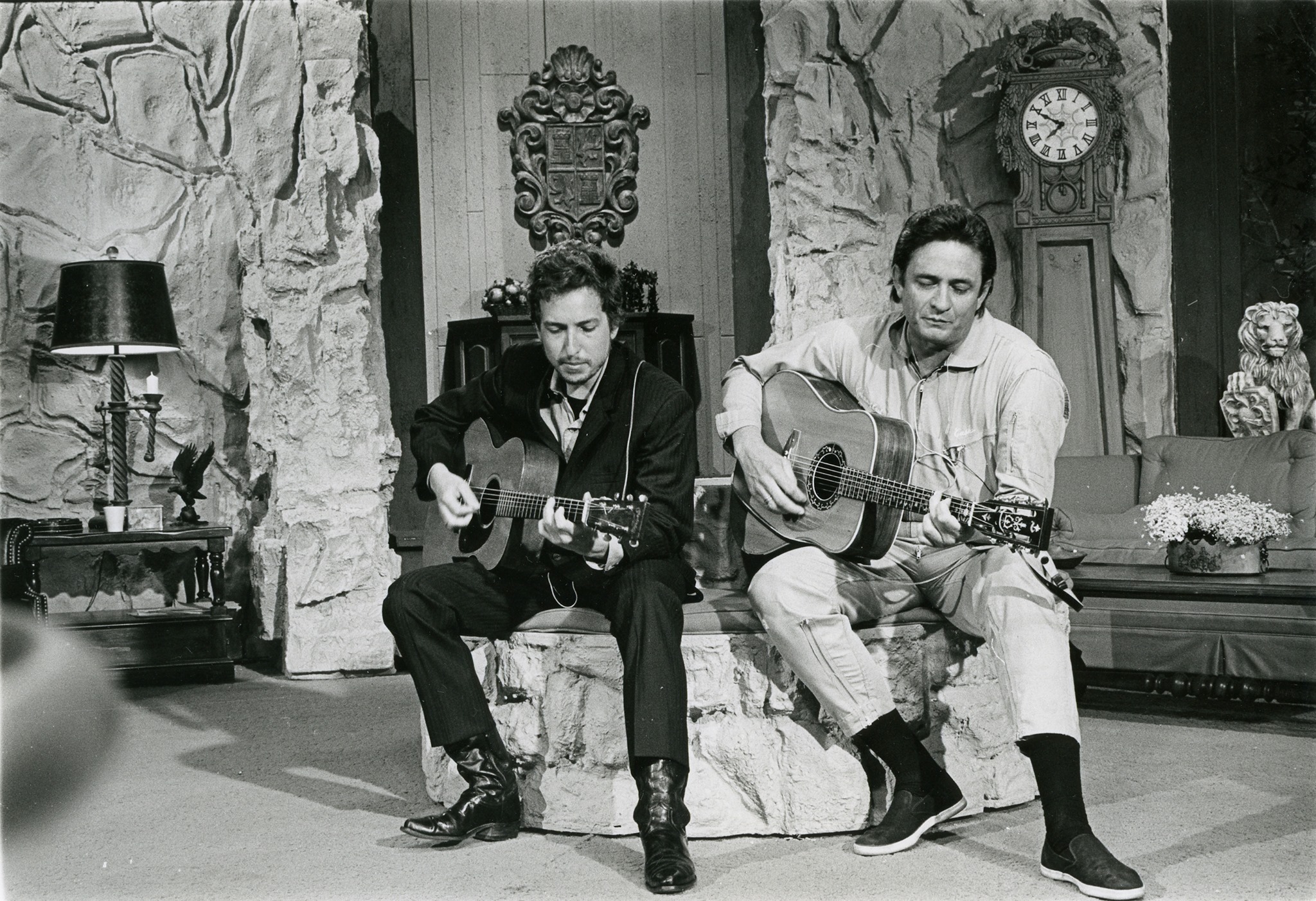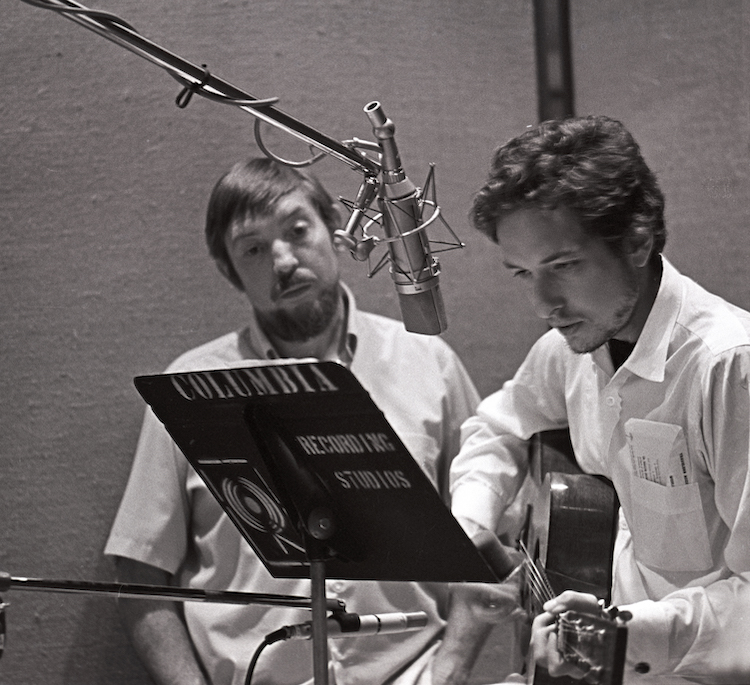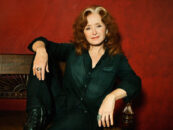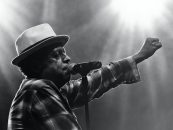Dylan, Cash Producer Bob Johnston on the Nashville Sessions
by Harvey KubernikThe late record producer Bob Johnston’s résumé includes Johnny Cash’s Folsom Prison and San Quentin live LPs, and the first three enduring albums of Leonard Cohen: Songs From A Room, Songs of Love and Hate and Love Songs. Johnston also produced Bob Dylan’s Highway 61 Revisited, Blonde on Blonde, Self Portrait, New Morning and John Wesley Harding.
Johnston was born on May 14, 1932, in Hillsboro, Tex. His career began as a songwriter. He eventually held a staff writing position at Elvis Presley’s Hill & Range Music and often reviewed potential Presley demos and songs earmarked for Presley movies in 1964 and 1965. In addition, Johnston had peripatetic stints talent-scouting for Kapp Records and arranging for the incredible Dot Records label. Arthur Alexander did one of Johnston’s songs and so did Mac Curtis, before Johnston joined Columbia Records in 1965. That year he produced Patti Page’s charming yet scary top 10 hit single “Hush, Hush Sweet Charlotte.”
Listen to “Wanted Man” from Johnny Cash At San Quentin
Johnston produced the music for the films Little Fauss and Big Halsy, and McCabe and Mrs. Miller, featuring the music of Leonard Cohen backed on occasion by the members of the Kaleidoscope.
Related: Dylan bassist Harvey Brooks on the making of Highway 61 Revisited
Johnston was initially introduced to Dylan in 1965 when he was called in to replace pivotal record producer Tom Wilson to complete Dylan’s Highway 61 Revisited album in New York City.
Listen to an outtake of “I Pity the Poor Immigrant” from the Dylan-Cash Nashville sessions
“I was working with Dylan in New York and I flew in Charlie McCoy from Nashville, introduced him to Dylan,” Johnston (who passed away on Aug. 14, 2015, at age 83) told me in a 2007 interview, “and the first thing we cut was a version of ‘Desolation Row,’ with Dylan on acoustic, Charlie on electric and Harvey Brooks on bass.
“I was standing by the soundboard and I said to Dylan ‘Listen, man, you ought to come to Nashville sometime. I got a fix-up down there with no clocks and the musicians are fuckin’ great.’ ‘Hmmm.’ He’d never answer you, just go ‘hmmm’ like Jack Benny… So I finished Highway 61 Revisited and then Dylan called me about six months later and he said, ‘Man, I got a bunch of songs. What do you think about going to Nashville?’ ‘That’s what I was talkin’ about!’ In 1966 we went down there for Blonde on Blonde.
“Dylan and I were notorious for using first takes,” Johnston said. “He liked to get it out of his head. ‘I don’t see any sense in doing it over and over. They knew what I wanted them to play, not what I gave them. That’s why they were there.’ When I started with Dylan he said, ‘My voice is too loud.’ Good enough. So I turned it down. Then I’d turn it up. ‘Man, I can’t hear myself,’ and had that voice out there. Finally, we got to the place where he said, ‘I can’t hear myself,’ ’cause I’d brought it so low. So I told him I’d take care of it and never asked him about it anymore and turned everything up and had that voice out there.”
Related: Our review of Dylan’s Rolling Thunder Revue boxed set
Fast-forward to 1967, after the notorious motorcycle accident in July 1966 that, among other things, sidelined Dylan (at least in the public eye) for the better part of a year. Johnston met up with Dylan again at a Ramada Inn in Nashville, Tenn., before working on John Wesley Harding together.
“He played me some songs and asked, ‘What do you think about a bass, drum and guitar?’ ‘I think it would be fuckin’ brilliant if you had a steel guitar.’ ‘You know anybody?’ ‘Yeah, Pete Drake.’ He was workin’ with Chet [Atkins], so I got somebody to take his place and brought him over,” Johnston ruminates. “Pete said, ‘Can I play some rock ’n’ roll?’ And I told him, ‘That’s what you’re here for.’ Charlie McCoy played a lot of instruments on that album. He played four, five or 20 instruments on every record.”
Johnston, as he did previously in the Nashville sessions for Blonde on Blonde, John Wesley Harding and now Nashville Skyline, took steps to remove the studio baffles, a floor space dividing device used to prohibit microphone leakage and the instruments of the musicians from bleeding into each other’s separate sound booths during the sessions.
Listen to “Rainy Day Women “12 & 35” from Blonde on Blonde
“I’ll tell you something else I did recording Dylan,” said Johnston. “What I did was put a bunch of microphones all over the room and up on the ceiling. I would use echo when everything got through and I could do that as much as I wanted. I wanted it to sound better than anything else sounded, ever, and I wanted it to be where everybody could hear it. And I don’t know what Dylan would have been if he stayed in New York with those people, and been mixed like that. And I know he would have never done that shit like he did in Nashville.
“Everybody else (at the time) was using one microphone, which means you have to sacrifice something. If you’re gonna have a band, you can’t have the band playin’ full-tilt. If you’ve got him in the middle you can’t understand everything with different people (engineers) in there raising the guitar up, raising the drums up, and shit like that. What I always did was that I had three microphones because he was always jerking his head around, and I put the microphone on the left, center and right and it didn’t matter where in the fuckin’ room he went. And then I’d mix and start on the left and go all the way over on the right. I always had four or eight speakers all over the room and I had ’em going. The louder I played it, the better it sounded to me. This is the way I really did it.
“So I’d usually have the piano on the outside left, without any echo. And then I’d put the echo on the right side. And then I’d have one of the guitars on the right and put the echo on the left…and then I’d match it all alone and brought up everything even so they could fight it out. And then that’s the way the band was. They didn’t have to raise this and lower this, and 15 people sitting around doin’ all that shit. The band was there and he was full-tilt. Then you could go any place in the room and understand him…and I never heard another word from him about anything.
“I would place glass around Dylan for recording,” said Johnston. “He had a different vocal sound. I didn’t make his different vocal sound. He always had different sounds on. I never wanted to be (Phil) Spector… and while the rest of the world was doing an album as big as Blonde on Blonde, which everybody was—the more musicians they could get, the better it was. (But) we went in with four people…in the middle of a psychedelic world!”
Listen to “I Want You” from Blonde on Blonde
I met Bob Johnston and producer/label executive Jimmy Bowen in July 1978 at MCA Records on Lankershim Blvd. in Universal City, when I was West Coast Director of A&R for the label. At the time Johnston was producing Joe Ely’s Down on the Drag. We went down the street to see Ely at the Palomino Club.

Dylan and Cash on The Johnny Cash Show (Photo via Bob Dylan’s Facebook page)
“During Nashville Skyline I had Cash in the Columbia Music Row studio and thought it would be nice to get Dylan in there too and I didn’t say anything to them,” Johnston said.
“Cash was in the studio and Dylan came in. ‘What are you doing here?’ ‘Gonna record.’ ‘Well, I’m recording too.’ So, they invited me to dinner, but I said, ‘No thanks.’ And when they returned, I had a ‘café’ set up outside with microphones and their guitars, and they came in, looked at the lights, sorta smiled at each other. June [Carter Cash] was there. We did like 18 tracks.”
Those sessions yielded the “Girl From the North Country” duet heard on Nashville Skyline. Well over fifty years ago, in April 1969, Dylan’s album Nashville Skyline, produced by Johnston, was shipped to retail outlets. The Columbia Records product was available on LP, reel-to-reel and cassette configurations.
Listen to Dylan and Cash sing “Girl From the North Country”
Cash contributed the back jacket text to Nashville Skyline, which won a 1970 Grammy Award for Best Album Liner Notes.
Charlie Daniels is the multi-instrumentalist who played on Nashville Skyline and other Johnston-produced endeavors.
“When Bob Johnston moved to Nashville in 1966,” Daniels recalled in a 2014 interview, “he called me and said, ‘Why don‘t you come to Nashville?’ And I always wanted to live there and packed up in 1967. He had just done Bob Dylan’s Blonde on Blonde. All the good things that happened to me in the early days were because he was a cog in the wheel. That needs to be said about Bob Johnston and bringing people to town like Dylan and Leonard Cohen,” said Daniels. “There was skepticism about Bob coming to Nashville because he was taking the place of a legendary producer, Don Law, who was an institution in town.
“Here’s this guy Johnston from New York, who had been doing Simon and Garfunkel, Bookends, Dylan, and now Leonard Cohen, who were not really thought of as being country. But the first thing Bob did when he came to town was to do a number one song with Marty Robbins. And in ’68 he produced the albums John Wesley Harding, Flatt and Scruggs’ The Story of Bonnie and Clyde, and of course, Johnny Cash’s live album at Folsom Prison.
Listen to Leonard Cohen’s “Suzanne”
“He had gained credibility. He was also, at the same time, bringing Al Kooper, Dylan and Leonard Cohen into town, who had never lived here. Dylan recorded in Nashville in 1966 for a while, but he’d come to town, do his stuff and leave. Dylan happened to record in a studio in Nashville and worked in it.
Related: Our Album Rewind of Johnny Cash at Folsom Prison
“And, hassles with long-hairs, prejudice, racism, didn’t exist in our world,” said Daniels. “In the ’60s, everything was pretty much in the throes of a lot of upheaval. This was back in Martin Luther King Jr.’s salad days, when he was going around, doing things that a lot of people didn’t understand or didn’t get. I was in Nashville when Dr. King was assassinated in Memphis. The thing was, when you’re goin’ in to make music that is a whole other thing.
“Nobody wanted to work in the big studio until Bob Johnston came to town and basically took it over,” he remembered. “Nobody else wanted to be there. He worked with it, got engineers he enjoyed working with, like Neil Wilburn, and he actually brought an engineer from New York with him when he first came down.
“The Columbia Studio was union. In Nashville, in the studios, you had to have the machines be a certain distance away from the boards, so the engineer could not work them both. But the thing I remember most about Studio A, the big studio, [is that] it was the new studio. The old studio, the Quanset Hut, was the legendary studio where the hits had been cut. Everybody wanted to work in that room.
“With people like Cohen and Dylan…Most of the Nashville sessions, the country artists, they would bring a demo in, they’d play the demo, you play it like the demo, you may change a key on it, but basically it’s gonna be the same thing, how they want the demo. So you’re playin’ pretty much inbounds.
“Charlie McCoy was the bandleader [for Dylan]. ‘How much do you want him to play? How many bars? How much do you want him to do?’ And Dylan replied, ‘All he can.’ Well, that really describes what this is all about.
“Cohen and Dylan were singers and songwriters. They wrote their songs, they weren’t coming in from a music publishing company. It was a lot different because there is no hurry. With Nashville Skyline, we had about 15 sessions booked and probably only used half of them and it was over. Everybody got so into what they were doing. If you listen to Dylan, the stuff before and after, Nashville Skyline stands out. It’s a different kind of record. The material was a little different and dealt with different themes.
Listen to “Lay Lady Lay” from Nashville Skyline
“Nashville Skyline and John Wesley Harding are two different records to me,” Daniels said. “The Nashville Skyline record was a departure for Dylan. It was just so different than anything I had heard him do. ‘What else you got, Bob? We got this one done.’ And of course, Dylan is a big first-take guy. If you can get it on the first take that’s how he wants it. And I like that about him. I’m the same way.”
In an interview I conducted with Johnny Cash in Anaheim, Calif., that was published in the August 16, 1975, issue of the now defunct Melody Maker, I wanted to know at the time when Cash first heard of Bob Dylan.
“I became aware of Bob Dylan when the Freewheelin’ album came out in 1963,” Cash said. “I thought he was one of the best country singers I had ever heard. I always felt a lot in common with him. I knew a lot about him before we had ever met. I knew he had heard and listened to country music. I heard a lot of inflections from country artists I was familiar with.
“I was in Las Vegas in ’63 and ’64 and wrote him a letter telling him how much I liked his work. I got a letter back and we developed a correspondence. We finally met at Newport [Folk Festival] in 1965. It was like we were two old friends. There was none of this standing back, trying to figure each other out. He’s unique and original. I keep lookin’ around as we pass the middle of the ’70s and I don’t see anybody come close to Bob Dylan. I respect him. Dylan is a few years younger than I am but we share a bond that hasn’t diminished. I get inspiration from him.”
In 2002, Steven Van Zandt [of Bruce Springsteen’s E Street band] emerged on the radio dial, hosting Little Steven’s Underground Garage, a weekly two-hour music show heard over 200 radio stations nationally and globally He is also executive producer of Outlaw Country, another 24-hour format that provides exposure for the rebels and renegades of country rock ’n’ roll on Sirius XM.
“On my Outlaw Country channel I program things from Johnston’s Cash albums all the time, especially the live San Quentin,” Van Zandt said. “On my show I like to spotlight producers, whether it be Andrew Loog Oldham with the Rolling Stones, or Bob Johnston’s work with Dylan. These are people who need to be talked about.
“I play a lot of Highway 61 Revisited and Blonde on Blonde. We usually don’t play a lot of Bob’s things that classic rock stations are playing, like ‘Tangled Up In Blue.’ I’ve programmed Rod Stewart and the Faces covering ‘The Wicked Messenger’ from John Wesley Harding and Jimi Hendrix doing ‘All Along the Watchtower’ from the same album.
Listen to Jimi Hendrix cover “All Along the Watchtower”
“Dylan pretty much walked away from rock ’n’ roll for a minute, ya know, and started getting back to his roots and taking them to some other place,” he continued, “more the country and folk world where he came from. People didn’t know what to make of it at the time. It was a strange sort of new Bob Dylan that emerged after his July 1966 motorcycle accident.
“Jimi Hendrix did more to promote John Wesley Harding than anybody. It was one of the most remarkable records ever made, of course. And Jimi picked up on that unusual and not very popular Bob Dylan album and made everybody go back to it. That’s how powerful that record was.
“Everybody went back to John Wesley Harding after hearing Hendrix, thinking, ‘You know, maybe I missed something. Look what Jimi Hendrix did with it. Look what the Faces did with it.’ It worked. It’s a terrific album but sort of subtle, compared to Blonde on Blonde, which most people consider Bob’s peak.”
Listen to Dylan’s “Tell Me That it Isn’t True” from Travellin’ Thru, 1967 – 1969: The Bootleg Series, Vol. 15
Dylan’s enormous recorded legacy is available in the U.S. here and in the U.K. here. Author Harvey Kubernik’s many music books are available here.







1 Comment so far
Jump into a conversationI was in high school when John Wesley Harding came out. A friend turned me on to it and I think I wore out my copy in about a year. A truly great album.